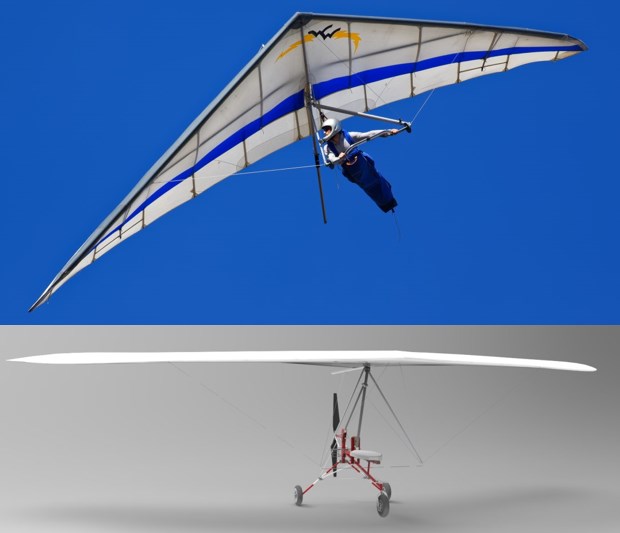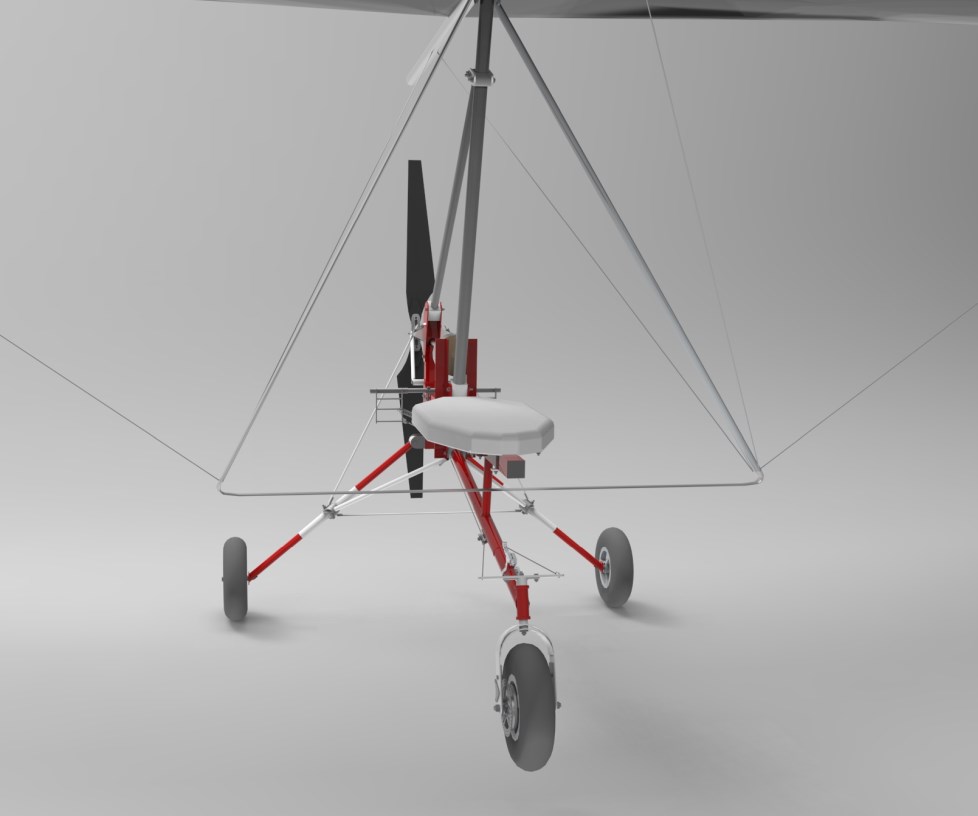Startup quietly bringing electric propulsion to ultralight flying

On a nice summer day, you may hear a loud buzzing in the air, and you eventually identify the source of the noise as an ultralight aircraft slowly making its way across the sky. Of course, ultralights are a great way to get airborne at a relatively low cost, but if the noise can be annoying on the ground, it must spoil the flight for the pilot to have the noise, vibration, and fumes of an internal combustion engine along for the ride.
New ultralight design incorporating electric propulsion
Vladimir and Ephi Blanshey are a father-son team who see an opportunity for using an electric propulsion system to radically improve the experience of ultralight flying. Blanshey Aviation is combining Vladimir’s practical experience that he gained in building a gyroplane, with Ephi’s self-taught skills in using Solid Edge to design a new type of flex wing ultralight that incorporates an electrical propulsion system. The rattle of an internal combustion engine will be replaced by a quiet hum! Another unique aspect of their design is that the pilot will be in a prone position, superman style. This contrasts to the typical seated position that Ephi describes as “Like flying an office chair!”
Ephi’s background is in programming and web development, and he says he is self-taught in areas like mechanical design and 3D printing. He searched online for CAD software for startups and came across the Solid Edge for Startups Program. After applying for the program and installing Solid Edge, Ephi taught himself 3D CAD and asked questions on the Solid Edge user forum where he was able to get answers quickly to specific questions he had.

Blanshey Aviation are adding an electric propulsion system to an ultralight aircraft to give more opportunities for hang glider like soaring
Blanshey Aviation and the Solid Edge Startup Program
Ephi says, “The Solid Edge Startup program has been really important for us. Right now, we are working on the concept design of our ultralight. We have limited capital at this stage, so the availability of comprehensive product development software at zero cost has been very beneficial for us. When we move closer to the manufacturing stage, we see ourselves moving to a commercial subscription or perpetual license of Solid Edge.”
Using Solid Edge to design the carriage
Ephi comments on how he is befitting from using Solid Edge: “I particularly like using synchronous technology. It’s like the system keeps in mind your original design intent as you progress through a project. I can make changes directly to my geometry without breaking a history tree. I tried other 3D software that claimed to have direct editing, but it was very primitive when compared to Solid Edge.”
Ephi continues, “All the parts are modeled accurately, so parts can be outsourced and manufactured based on drawings we quickly create from the 3D models. I also use Solid Edge to ensure all clearances are good. For example, verifying the clearance of the propeller from the ground, keel, and the flex wing support wires. And ensuring the glider’s control bar has complete freedom of movement to maneuver the aircraft.”
Calculating the center of gravity
Another key capability of Solid Edge is accurate calculation of the center of gravity of the carriage as Ephi explains: “The main component of an ultralight trike is referred to as the carriage. This is the assembly that hangs underneath the wing from a single teeter bolt. This component is affectionately referred to in the trike community as the “Jesus bolt” because your life depends on it! The carriage has three wheels used for takeoff and landing, the bed for the pilot, and the propulsion system.” Being able to accurately calculate the center of gravity of the trike using Solid Edge is very important. “If I move the location of the battery pack in the trike, I can see very quickly the impact on the center of gravity,” says Ephi.

Ephi is using Solid Edge to ensure the center of gravity of the trike is in the correct location, and the control bar is also positioned correctly
In the future, Ephi is interested in using the rendering capability in Solid Edge to create photorealistic images of the ultralight for presentation to potential investors, and eventually for marketing to customers. He is also interested in using Simcenter FLOEFD for Solid Edge to model airflow around the ultralight and specifically the propeller.
Reliable power source opens opportunities for soaring
One final comment from Ephi: “One of the interesting possibilities of using an electric motor instead of an internal combustion engine is because it is such a reliable power source, you can turn it off during flight and soar unaided when the opportunity allows, much like a hang glider.” This sounds like a great idea to me. My main sport is sailing and as a sailor I know that one of the best moments is when you turn off the engine. You may need an engine to maneuver out of the harbor, but once out onto the lake or ocean, you lose the engine and use the sails. The noise, vibration and fumes are gone, replaced by the quiet sigh of the wind through the rigging.
If you want to find out more about this project you can contact Ephi at ephi@blanshey.com. We wish Blanshey Aviation success in bringing this new ultralight design to the personal aviation world!

Image of Blanshey Aviation’s ultralight trike including the “bed” that supports the pilot


